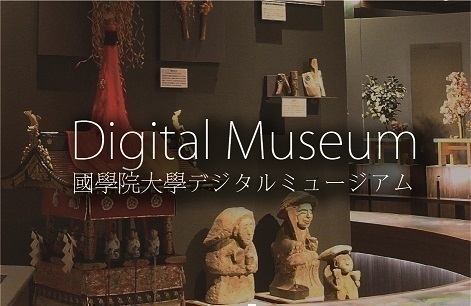- トップ
- Encyclopedia of Shinto
- Saijitsu
Encyclopedia of Shinto
| Main Menu: | |
| Links: |
詳細表示 (Complete Article)
| カテゴリー1: | 5. Rites and Festivals |
|---|---|
| カテゴリー2: | Types of Rituals |
| Title | Saijitsu |
| Text | Shrine observances can be largely divided into annual rituals that are performed at the same time each year, rituals that are performed at certain intervals such as the 20th year or the 12th year, as well as special observances that are carried out in irregular intervals. The day on which a ritual is performed is called saijitsu. On occasion, the ritual day is determined based on a calendrical system, as in the case of the 1st day of a month, the 10th day of a month, the 15th day of a month, and the last day of a month (misoka). On other occasions, it is determined based on the twelve horary signs (jūnishi), as in the case of the first Horse Day (hatsu-uma) in a month, the second Tiger Day (naka-no-tora) in month, and the last Rabbit Day (shimo-no-u) in a month. Today, certain days of the week like the first Sunday or the third Saturday in a month are also used as saijitsu. Also, ritual days can fall on the five seasonal festivals (gosekku), or overlap with national holidays. Thus, ritual days are widely varied when viewed as a whole. This is not limited to shrine rituals, but is the case with rituals in general. Non-shrine rituals generally take the form of festivals that are carried out by various groups, such as local communities. These festivals mark important moments in the life of a group and are accompanied by a particular form of respite and tension that differentiates them from ordinary life. In this regard, this group of saijitsu is related to the nature of the group in question and their surrounding conditions. Also, the same rituals and festivals can occur on different dates according to regional differences. Changes have also occurred throughout history, and the rituals and festivals have been adapted to the social necessities of each historical period. Among the many reforms since the onset of modern times, especially the introduction of the solar calendar in 1873 caused wide-ranging changes upon which shrines chose to either modify their ritual calendar to the solar calendar, retain the old lunar calendar to determine the saijitsu, or move the event one month back. Also, the implementation of a unified set of Shinto rituals and festivals at the national level added new elements to the observances at each shrine. However, it is also true that it is believed that ritual/festival days should not be moved too easily. When ritual days are examined by season, observances tend to be concentrated in the seeding season of spring and in the harvest season of fall as a characteristic of agricultural societies based on rice cultivation. Urban festivals, on the other hand, tend to take place in late spring or during summer. For example, in the ancient period, "clan kami festivals" (ujigami matsuri) are known to have taken place in the second, fourth and eleventh month of the lunar calendar, which appears to be possibly related to the beginning of farming and the time of harvesting. Furthermore, the Gion-e of the mid-Heian period – the festival of Yasaka Shrine that emerged with the practice of worshipping vengeful spirits of the dead (goryō shinkō) – was believed to pacify the evil spirits responsible for outbreaks of epidemics in cities. It took place in the sixth month of the lunar calendar because this month was the midpoint of a year. The choice of this date was based on a calendrical system as opposed to alternative methods of determining dates such as the twelve horary signs. When spring and fall observances are regarded as the beginning of the year, the beginning of farming, for example, comes to be seen as New Year. Likewise, the Kannamesai which is performed at the Grand Shrines of Ise at the time of harvest (October; September according to the old lunar calendar) is sometimes referred to as the kanna New Year (kanname shōgatsu). However, with the spread of a calendrical system in Japan, the New Year was celebrated in accordance with this system. The date for an observance is often chosen based on the sexagenary cycle (eto). In other cases, based on the lunar calendar, a full moon day (fifteenth day of a month), a first quarter moon day (the eighth day), or a waning moon day (twenty-third day) was chosen. Observances referred to as kotoyōka (observance on the eight day) and on the nijūsanya (observance on the night of the twenty-third day) are examples of this system. Additionally, a date can be chosen on the first and the last day of the month, such as the 1st day of the month (tsuitachi), the last day of the month (misoka), or tenth day of the month (tōkame or junjitsu). Some of these saijitsu are considered to originate in the appearance of a kami on that very day, and this event is often taken as the founding of the shrine and the enshrinement of the deities (saijin chinsai) at it. Especially in the case of shrines that were established after the Meiji Restoration under the influence of a nationalistic consciousness, saijitsu often exist in relation to the deities' birthdays or their feats. Some rituals and festivals last more than one day. The Gion Festival (gion matsuri) at Yasaka Jinja in Kyoto lasts for several weeks. Various events and individual ritual ceremonies are performed during this period. Also, some festivals in which portable shrines (mikoshi togyo matsuri) are paraded may last for several days. Among shrine rituals and festivals, some large-scale observances, known as reitaisai, are regarded as particularly important compared to other observances throughout the year, thus often displaying particularly unique characteristics even among the extremely varied saijitsu. — Sakurai Haruo |




